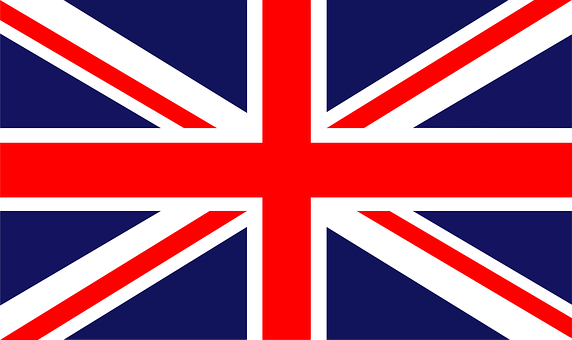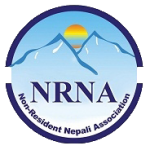Bringing Grassroots Movement in USA
Today, the NRNA (Non-Resident Nepali Association) has evolved into a unique global Diaspora organization, with 70 national chapters (National Coordination Councils, aka NCCs) worldwide. It was founded by some NRN leaders in 2003 by a conference in London, UK, with the formation of an International Coordination Council (ICC). It is natural that theNRNA’s initial years were invested in developing institutional infrastructure, such as, developing the by-laws, policies and guidelines for the ICC.
The NCCs came into picture only slightly later, and gradually as the NRNA ICC leaders began to reach out to national Diaspora groups. In other words, its formational years have seen top-down approach regarding organizational development. However, in recent years, there has been a realization and emphasis that a strong ICC is possible only when NCCs are strong, and the NCCs should reach out to the grassroots to become effective. NRNA has thus increasingly committed itself to a bottom-up approach, and has in the process been continuously learning from the challenges it faced along the way and is moving forward with more NCCs becoming institutionalized.
The recent development in the NCC of USA can be taken as a case in point.
The Nepali communities in the US hold a significant place in global Nepali Diaspora map because of their residence in the country that is considered a global economic powerhouse, and because of the professional and entrepreneurial successes many have achieved in the adopted homeland. The US continues to be an important destination for the Nepali students and others. I have not seen an official data that shows the population of Nepalis living in the United States of America (USA), but have heard estimates ranging from 250,000 to 350,000. Some even put it at the mark of half a million. The important fact is that the NRNs (Non-Resident Nepalis) in the US have a lot of potentials to contribute to the NRNA and Nepal and Nepalis. President of NRNA Shesh Ghale once said, NRN movement would be only half successful without active participation from the US.
Although the US participation in the NRNA has been there right since 2003, it took time to percolate the enthusiasm to the national and local levels. Several Nepalese associations were active in the US before the NRNA was founded, some of them such as NAC (Nepalese Americas Council) and ANA (Association of the Nepalis in the Americas) with regional (North American) jurisdiction. It was NAC that brought the NRN issues home into its folds, and tried to transform itself into NRN North America (including Canada). In 2008, a decision was made to form separate NCCs in the US and Canada, and NAC legally became the NCC for the USA. Highly respected personalities such as Dr. Ambika Adhikari, Dr. Tara Niraula, Suman Timsina, Pralhad KC, Shiva Rai, and most recently Khagendra Chhetri have so far provided leadership to the NCC of USA.
The NCC of USA has not been without challenges, and some issues arose in 2013 that necessitated intervention from the ICC level. On the 26th of September 2013, the International Executive Secretariat (IES) of NRNA led by the then President Jiba Lamichhane issued a directive to NRN USA Board led by Shiva Rai, and Pralhad KC to create a conducive environment for and to hold a free, fair and timely election of the Board of NRN NCC of USA under the supervision of the ICC’s Regional Coordinator for Americas, within 90 days from the conclusion of Global Conference in Kathmandu (October 2013) or no later than January 31, 2014. Having been elected as the Regional Coordinator for Americas at the Global Conference in October 2013, it was my responsibility to immediately follow up on the IES directives, which I did in close consultation and with maximum support from Deputy Regional Coordinator Sonam Lama and Patron Dr.Ambika Adhikari. We also received support from Advisors Ram Kharel, Ratan Jha, and ICC members AC Sherpa, Dr Bishnumaya Pariyar, and several NRN leaders and well-wishers. Some notable outcomes of that process can be summarized as follows:
Wishing a brighter future for NRN USA, former President Pralhad KC voluntarily withdrew from the Board to let Shiva Rai take the charge of the Board and move forward with the election process
The NCC Board led by former President Shiva Rai cooperated to carry out elections and developed a detailed work plan. Executive members of the Board Rajendra Siwakoti, Narayan Gurung, Bishnu Deurali, Mukunda Dhungana, Banita Katila and others worked hard to develop and implement the plan.
The ICC representatives and NCC collaborated to form the By-laws Amendment Committee under the leadership of Attorney Durga Bhurtel. His team worked hard to have the By-laws amended through the House of Delegates (HODs), and the NCC Board cooperated fully in the process. The main points for amendment included empowerment of registered general members (individuals) as the primary basis of election (they would be the one who would be the voters and candidates in the election, and the provision of House of Delegates was removed). Provision of the direct role of member associations in the election process was also removed. Voting would take place electronically, in person (in designated polling stations), or by mail in ballots, as prescribed by the Election Commission. For the election process, the entire country (USA) would be treated as one constituency.
The ICC and NCC team collaborated and agreed to form an Election Commission under the leadership of Attorney Binod Roka. The Commission published and executed a detailed Election Plan.
As the process moved forward with collective efforts, in early 2014, the current IES led by President Shesh Ghale re-iterated adherence to the directives of the previous IES and also agreed to extend the deadline from January 31st2014 to the end of March and later to the end of June 2014 to allow sufficient time for a free and fair election process. Consequently, the process moved further with the followings:
The number of registered general members increased from f around 320 to over 4,000
A membership verification committee worked hard to verify the members, which formed the basis for voters’ list
Heightened interest of NRNs to become candidates
Media groups organized several town hall meetings to interact with the candidates
Finally, election results were announced in mid-June 2014 in New York. The team led by Attorney Khagendra GC was sworn in. Similarly, 3 ICC members- Dr Binod Shah, Raja Ghale and Nabin Sherchan, were announced as elected. There too, I witnessed the supportive role played by the media colleagues in the election process, which culminated in New York amidst an amicable environment.
Within a short 9 months’ period, the newly elected NCC Board led by President GC has shown us ways of harnessing the true potentials of NRNs in the US by demonstrating the following.
The USA became one of the largest contributors to the fundraising campaign for the NRNA Office Building, which is considered as a symbol of unity for the global Nepali Diaspora. This support has been globally recognized and appreciated.
The USA has become the largest NCC in terms of registered general members, which in March 2015 crossed the 11,000 mark, and thus taking the association deeper into the grassroots
The NCC has initiated various charity and social programs within the US (description of which is beyond the scope of this article)
Recently, the 3rdAnnual General Meeting of NRN USA, convened by Sr VP Lok Tiwari, was successfully organized in Metro DC area on March 21-22, 2015. It had a good participation of NRNs across the country, and I was delighted to see firsthand the dedication of our colleagues on the NCC Board, especially young folks such as Youth Coordinator Barsha Moktan, Treasurer Bed Basnet, General Secretary Krishna Pokharel, Joint Secretary Dil Shrestha, Board member Dharma Bhattarai and many other dedicated Board representatives and volunteers. The AGM amended the By-Laws once again, based on which new NCC election was to be held in April 2015. The new Board will take over in May 2015, its term being aligned with that of the ICC, i.e. for a two year period. So, we will soon be working with yet another NCC Board in the US.
While in Washington, I also saw a live show of open debate of six presidential candidates organized by a Nepali Television Group, which went on for about a couple of hours. I found it to be an interesting civic exercise that would enhance transparency and accountability of the association, and can also increase awareness about roles of not only the NCC Board but also the general members. The new team has the challenge of following the footsteps of the previous Boards, as they have set the bar high, and should be reaching out to the huge membership base. This team will also need to work hard in operationalising the concept of state chapters (as provisioned by the amended By-Laws) in close and friendly partnership with many pre-existing and active Nepalese associations. The NRN in the US can no longer be characterized as a “small NRN NCC in a big country” as I once read in an online article a couple of years ago. Those who served on the NCC Boards and many who supported from outside the Board have worked hard to bring the NRNA to the journey of reaching out to the grassroots, and dedicated their time and efforts towards a strong, institutionalized and democratic NRN USA. Let us express our deep gratitude to all of them, and also wish all the best for the new Board that will be in place this year.
(The author is Americas Regional Coordinator (RC) of NRNA-ICC. He acknowledges and thanks to Patron Dr Ambika Adhikari and DRC Sonam Lama for their review of this article.)



